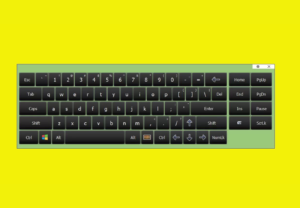Around the world, time signatures are more than just rhythmic frameworks; they are deeply intertwined with cultural histories, storytelling, and regional musical styles. This exploration reveals how varying rhythms, from the complex polyrhythms of African drumming to the intricate cycles of Indian classical music, reflect different cultures’ societal values, traditions, and artistic expressions.
In layman’s language, rhythm is a fundamental building block of pattern and structure in music. Three time signatures are the most common: duple (2/2, 2/4, 6/8), triple (3/4, 9/8, 3/2), and quadruple (4/4, 12/8, 4/2). A duple meter has two beats per measure, a triple meter has three beats per measure, and a quadruple meter has four beats per measure. Knowing what time signatures are is vital.
Generally speaking, understanding time signatures is fundamental for performers and composers alike, as it influences everything from the arrangement of notes and chords to the pacing and dynamics of a musical piece. As mentioned, rhythm is an essential aspect of music and life. Much of our experience is based upon rhythmic patterns (sleep/wake, morning/night, in/out, up/down, etc.).
When a series of notes and rests repeats, it forms a rhythmic pattern. In addition to indicating when notes are played, musical rhythm stipulates how long they are played and with what intensity. This creates different note durations and different types of accents. In this journey, we uncover how these distinctive time signatures shape the sound of music from various regions and convey the emotional and spiritual essence of each culture’s musical heritage.
Understanding Rhythmic Patterns Across Cultures:
Time Signatures And Their Role In World Music
Time Signatures, also known as Meter Signatures, play a crucial role in defining the rhythmic structure of a piece of music. They are notational symbols placed at the beginning of a musical score to indicate the number of beats in each measure and identify which specific note value (such as a quarter or eighth note) represents one beat.
This notation system provides musicians with essential information about the tempo and rhythm of the piece, guiding them on how to count and interpret the music. Time signatures help shape a composition’s overall feel and flow by setting the framework for the rhythmic pulse, whether a fast-paced march or a slow, lyrical ballad.
Standard Western music theory divides time signatures into three types of musical meter: duple meter (where beats appear in groups of two), triple meter (where beats appear in groups of three), and quadruple meter (where beats appear in groups of four).
African Rhythms: Polyrhythms And Complex Time Signatures
African music is renowned for its rich use of polyrhythms and complex time signatures, crucial elements in its vibrant and dynamic sound. Polyrhythms in African music involve multiple rhythm patterns being played simultaneously, creating a layered and intricate musical texture. These rhythms often don’t fit into the simple time signatures commonly found in Western music.
Instead, they feature complex time signatures that can change frequently within a single piece, adding to the music’s energetic and spontaneous feel. This complexity is not just technical; it’s deeply connected to African cultural practices, celebrations, and storytelling, making rhythm an integral part of the continent’s musical identity.
Celtic Music: Jigs, Reels, and Unique Time Signatures
Celtic music, originating from regions like Ireland and Scotland, is known for its lively jigs and reels, often using unique time signatures. Jigs are typically played in 6/8 time, giving them a bouncy, triplet feel perfect for dancing. Reels, conversely, are usually in 4/4 or 2/4 time, characterized by a quicker driving rhythm.
These time signatures are fundamental to the traditional dance music of Celtic cultures. They provide the framework for the spirited melodies played on instruments like fiddles, flutes, and bagpipes. Celtic music’s time signatures contribute significantly to its distinctive, toe-tapping quality that has gained popularity worldwide.
Time Signatures Case Studies In Diverse Musical Traditions
Exploring the music world reveals various time signatures, bringing unique rhythms and feels to different musical traditions. Here are some specific examples from various parts of the world:
1. West African Music (12/8 Time Signature)
Many West African music traditions, such as those in Mali and Ghana, often use a 12/8 time signature. This creates a distinctive triplet feel, where each beat is divided into three. It’s a common foundation for polyrhythmic textures, where multiple rhythms are played over this triplet base, creating a rich and layered sound.
2. Indian Classical Music (Tala System)
Indian classical music doesn’t use time signatures in the Western sense but employs a’ tala’ system. Talas are rhythmic cycles that can be very complex. For example, the ‘Teen Tal’ in Hindustani music has 16 beats, divided in a 4-4-4-4 pattern, and is a standard rhythmic structure for classical compositions.
3. Bulgarian Folk Music (7/8, 9/8, 11/8 Time Signatures)
Bulgarian folk music is famous for using odd and complex time signatures. A popular example is the 7/8 time signature, divided into patterns like 2-2-3, 3-2-2, or 2-3-2, used in dances like the Ruchenitsa. Similarly, 9/8 and 11/8 time signatures are also commonly used, providing a unique and lively rhythm.
4. Argentinian Tango (2/4 Time Signature)
The classic Argentinian tango typically uses a 2/4 time signature. This provides a rhythmic structure that is both staccato and fluid, perfectly complementing the dance’s dramatic and passionate style.
5. Irish Traditional Music (6/8 and 9/8 Time Signatures)
In Irish music, jigs are commonly played in 6/8 time, giving them a lively, bouncing rhythm. The slip jig, a less common form, is in 9/8 time, offering a more complex and elegant rhythmic pattern.
Each of these examples demonstrates how different cultures use time signatures not just as a technical aspect of music but as an expression of their unique cultural identity and traditions. The variety and complexity of these rhythms contribute significantly to the rich diversity of global music.
Wrapping Up;
As we’ve journeyed through the diverse world of time signatures, it’s clear that these rhythmic patterns are much more than mere musical technicalities. They are, in fact, vibrant expressions of cultural identity, reflecting the histories, stories, and traditions of people around the globe.
From the complex polyrhythms of Africa to the lively jigs of Ireland, each unique time signature enriches the tapestry of world music, offering insights into the societies from which they originate. This exploration enhances our appreciation of global music and underscores the universal language of rhythm, which transcends boundaries and unites us in the shared experience of music.








